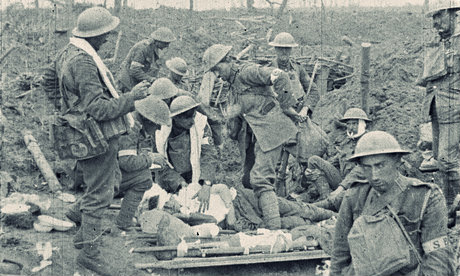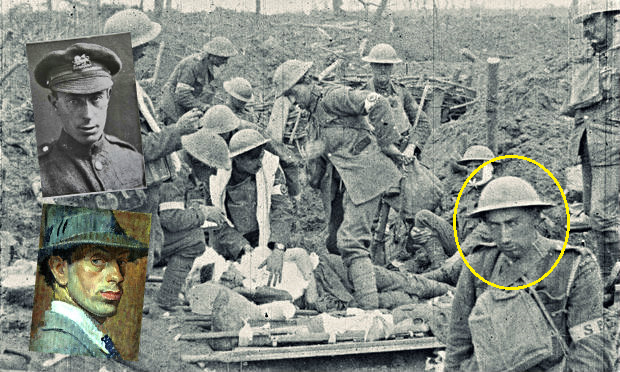The Imperial War Museum is investigating a WWI footage in its archives for the proper identification of WWI poet Isaac Rosenberg. If indeed verified that the stretcher bearer in the said footage was really Rosenberg, then, the find would be very vital in war history as it will be the first and only known moving image of a war poet at work in the trenches of the Great War.
In police service for the past three decades, now retired DS Terry Abrahams was the one who spotted the face of WWI poet Isaac Rosenberg in the said WWI footage while it was shown during an ITV documentary, The People’s War. Instantly recognizing the face of the poet in one archive sequence, he recounted exclaiming to his wife “That’s him!”. The poetry enthusiast, then, showed the evidences – the photographs and the footage itself – to other police experts and they have agreed to his identification.
Accordingly, Mr. Abrahams thirty years of experience in the police force had given him the knack to immediately spot and identify faces. It was this talent that helped him recognize the face of WWI poet Isaac Rosenberg in the said film.
Who is Isaac Rosenberg?

War poet Isaac Rosenberg was born to Lithuanian immigrants and grew up in the East End of London. He was training to be a painter before the Great War broke out. As a matter of fact, he had won several prizes at the Slade School of Fine Art.
A reluctant soldier, Isaac Rosenberg believed that war was unjustifiable but thought that “all of us must fight to get the trouble over and done with”. 1915 saw him entering the British Army.
It is an accepted knowledge that Isaac Rosenberg served in the Great War as a stretcher bearer. Witnessing the horrors of war from the trenches of the First World War, he wrote about his experiences in his moving poems some of which were reflected in this one entitled Dead Man’s Dump and is as follows:
A man’s brain splattered on a stretcher bearer’s face;
His shook shoulders slipped their load,
But when they bent to look again
The drowning soul was sunk too deep
All of the poems Isaac Rosenberg penned emanated depth and compassion that clearly spoke they were from first-hand encounters.
What Experts Say
According to Jean Moorcoft Wilson, a biographer of Issac Rosenberg as well as a leading scholar when it comes to war poets, Rosenberg’s poems clearly bespoke of how he was doing the thing while other people were giving out the orders. Wilson took the aforementioned poem [this view she wrote about in the war poet’s biography] pointing out that a reader reading it would be seeing WWI through the eyes of an individual who had been “carrying wire up the line on limbers and running over dead bodies”.

There are several photos and self-portraits of Isaac Rosenberg in existence and these are currently viewed as further evidences to the claims made by Mr. Abrahams. These photos and portraits show the war poet as someone with a uniquely elongated face and a straight nose which is a prominent feature in his facial structure.
When Wilson viewed the WWI footage the first week of this month, she came to the conclusion that the man Abrahams saw could certainly be Isaac Rosenberg. Imperial War Museum’s senior curator, Dr Toby Haggith, also believes that but stresses out that they needed to do further research on the matter to make sure of the unit, location and date when the said footage was taken.

Meanwhile, Jewish East End Celebration Society’s chairman, Clive Bettington, is strongly convinced the man in the footage is indeed war poet Isaac Rosenberg. Describing the figure in the footage as haunting, he stated that it showed someone who was utterly dejected, who had picked up bodies throughout the day yet hated every minute of being there in the trenches.
Want War History Online‘s content sent directly to your inbox? Sign up for our newsletter here!
The Jewish East End Celebration Society is planning to erect a statue in honor Rosenberg in London.
